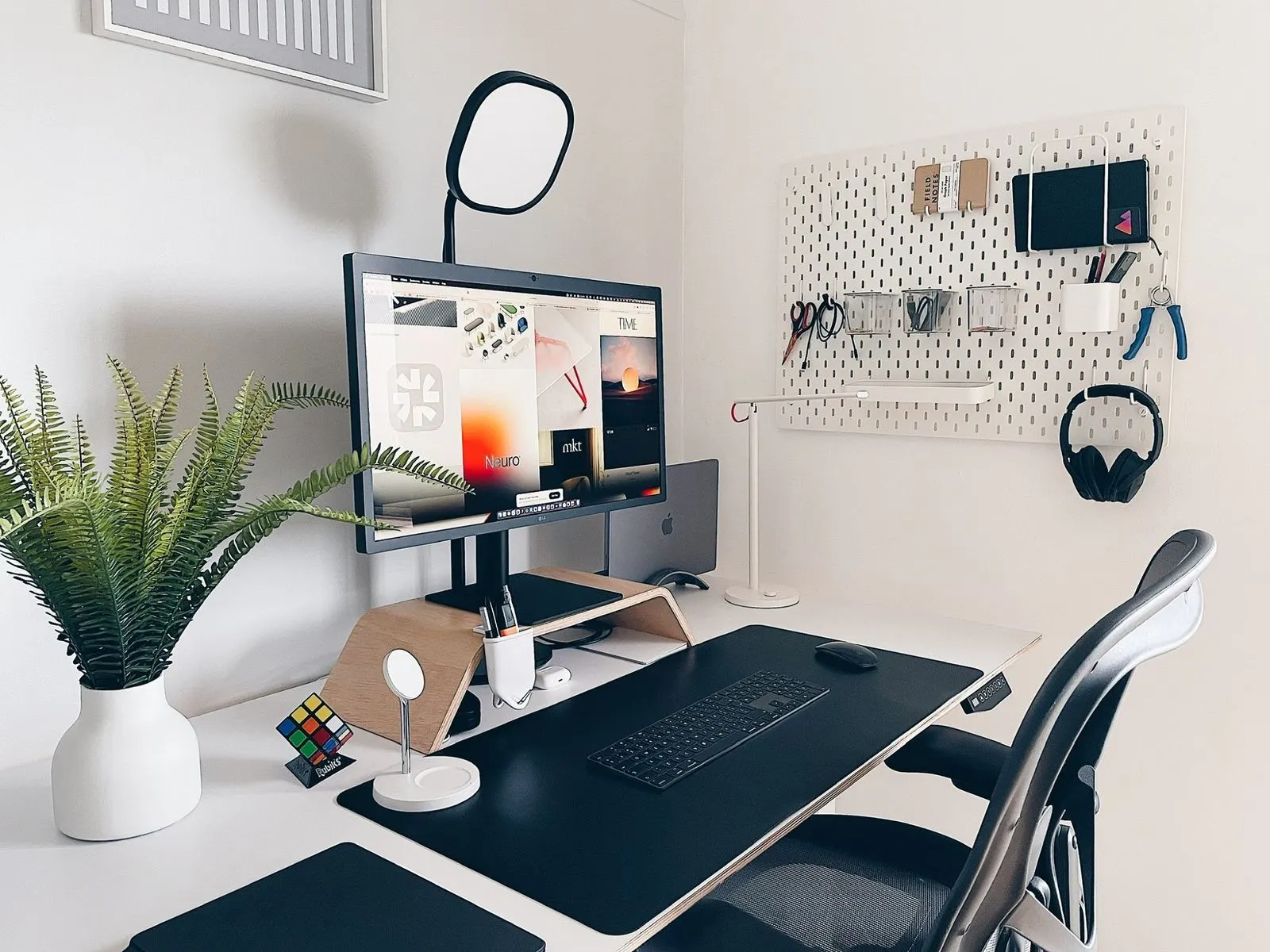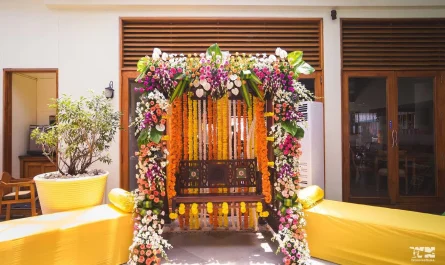In today’s fast-paced world, our workspaces often become a hub of chaos, filled with stacks of paper, tangled cords, and countless distractions. This clutter not only affects the aesthetic of our homes but, more importantly, can significantly impact our focus and productivity.
The solution isn’t to buy more storage; it’s to embrace the philosophy of minimalism. A minimalist home office setup is more than just a design trend—it’s a deliberate strategy to create a calm, organized, and inspiring environment that empowers you to do your best work.
This isn’t about stark, empty rooms; it’s about curating a space where every item serves a purpose and every design choice contributes to a state of flow. By the end of this comprehensive guide, you’ll have all the knowledge and inspiration you need to transform your workspace into a productivity powerhouse.
The Core Philosophy of Minimalist Design:
Before you start rearranging furniture, it’s crucial to understand the principles behind minimalism. At its heart, minimalism is about intentionality. It’s about removing the non-essential to make room for what truly matters. In the context of a home office, this means:
- Function Over Form: Every item should have a clear purpose. If it doesn’t aid your work or bring you joy, it has no place in your office.
- Quality Over Quantity: Instead of cheap, disposable items, invest in high-quality, durable pieces that will last. A solid wood desk and an ergonomic chair are better long-term investments than a cluttered space full of fleeting trends.
- Clean Lines and Neutral Tones: A simple, uncluttered visual landscape reduces cognitive load and promotes a sense of calm. Stick to a neutral color palette of whites, grays, and blacks, and introduce texture and warmth through natural materials like wood, plants, and wool.
Step 1: The Great Decluttering
This is the most critical step. Start by taking everything out of your office. Yes, everything. Create three piles: “Keep,” “Donate/Sell,” and “Trash.” Be ruthless.
- Digital Declutter: Don’t forget your computer. Organize files, delete old documents, and clean up your desktop. A digital workspace that mirrors your physical one is key to maintaining focus.
- Paper Management: Scan important documents and shred the rest. For the papers you must keep, invest in a simple, minimalist filing system. Use a single-entry point for incoming mail and paperwork to prevent piles from forming.
- Tackling the Wires: Cables are a notorious source of clutter. Use cable ties, wire organizers, or a dedicated cable management box to hide them out of sight.
Step 2: Curating Your Essential Furniture
Your furniture forms the foundation of your minimalist home office. Choose pieces that are not only functional but also aesthetically pleasing.
- The Desk: Your desk is the centerpiece. Look for a clean, simple design without excessive drawers. A minimalist standing desk is an excellent option to improve posture and health. For smaller spaces, a sleek, wall-mounted or floating desk can be a space-saver.
- The Chair: An ergonomic chair is non-negotiable. It may not look like a piece of art, but it is an investment in your well-being. Look for simple, high-quality designs.
- Storage Solutions: The goal is to keep as much as possible off your desk. Use closed storage like a simple filing cabinet or a credenza. Keywords like home office organization and smart storage solutions are a good starting point for your research. Think vertically with wall-mounted shelves to save floor space.
Step 3: Strategic Decor and The Power of Plants
Minimalist decor is not about emptiness; it’s about purposeful adornment.
- Lighting: Good lighting is crucial for productivity. Opt for a simple, functional desk lamp and maximize natural light. Sheer curtains can diffuse harsh sunlight while maintaining an open feel.
- Art & Personality: Choose one or two pieces of art that inspire you. A single, large print can make a statement without cluttering the walls.
- Greenery: A few well-placed plants can add life and color to a minimalist space. Keywords like aesthetic home office and home office plants are popular for a reason. Plants not only look good but also improve air quality.

Step 4: Productivity Tips for a Minimalist Space
A minimalist space makes it easier to adopt minimalist habits.
- The One-In, One-Out Rule: For every new item that enters your office, one must leave. This simple rule prevents clutter from accumulating again.
- Digital and Physical Boundaries: Designate your workspace for work only. When the workday is over, close your laptop and leave the space. This clear boundary helps you disconnect and maintain work-life balance.
- The “To-Do” List: Instead of sticky notes everywhere, use a single, well-organized task management system, whether it’s a digital app or a classic notebook.
Conclusion:
Creating a minimalist home office is a journey, not a destination. It’s a continuous process of editing and refinement. By focusing on intentionality, function, and a curated aesthetic, you’re not just designing a room; you’re building a space that supports your goals and enhances your well-being. The result is a calm, focused, and inspiring environment where your best work can truly flourish.
Frequently Asked Questions
How do I find the right minimalist desk for a small space?
Look for desks with built-in storage, a slim profile, or a floating design to save floor space. Search for “small minimalist desk” or “corner desk for small home office” to find designs that are both functional and space-efficient.
What are the best colors for a minimalist workspace?
Neutral colors like white, beige, gray, and black are common and create a clean backdrop. You can add subtle color through accent pieces like a plant, a single piece of art, or a cushion for a touch of personality.
How can I hide my computer cables in a minimalist setup?
There are several great solutions. Use adhesive cable clips to run wires along the underside of your desk, or invest in a decorative cable management box to conceal power strips and chargers.
Can a minimalist office still be comfortable and inviting?
Absolutely. Minimalism is not about being cold or sterile. You can add comfort and warmth with elements like a soft rug, a comfortable chair with a plush throw, or a warm-toned desk lamp. The key is to choose these items deliberately, ensuring they add value without creating clutter.



